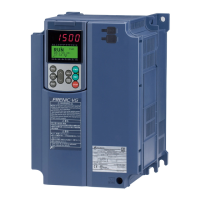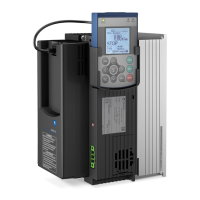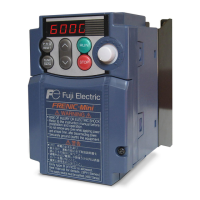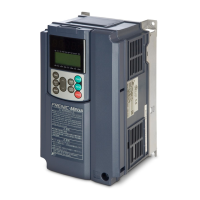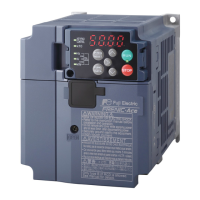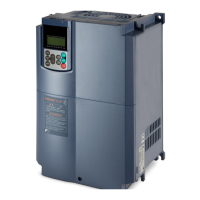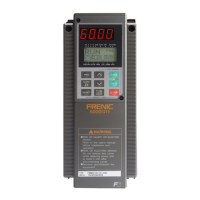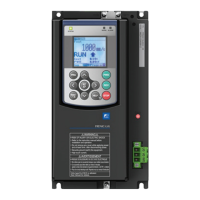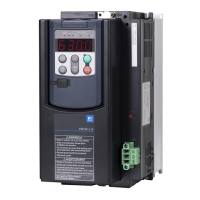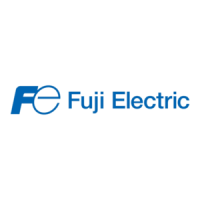Glossary
G-3
Glossary
DC link bus voltage
Voltage at the DC link bus that is the end stage of the
converter part of inverters. The part rectifies the
input AC power to charge the DC link bus
capacitor/s as the DC power to be inverted to AC
power.
Deceleration time
Period during which an inverter slows its output
frequency down from the maximum to 0 Hz.
Related function codes: F03, F08, E11, and H54
Digital input
Input signals given to the programmable input
terminals or the programmable input terminals
themselves. A command assigned to the digital input
is called the terminal command to control the
inverter externally.
Refer to Chapter 8, Section 8.4.1 "Terminal
functions."
Electronic thermal overload protection
Electronic thermal overload protection to issue an
early warning of the motor overheating to safeguard
a motor.
An inverter calculates the motor overheat condition
based on the internal data (given by function code
P99 about the properties of the motor) and the
driving conditions such as the drive current, voltage
and frequency.
External potentiometer
A potentiometer (optional) that is used to set
frequencies as well as built-in one.
Fan stop operation
A mode of control in which the cooling fan is shut
down if the internal temperature in the inverter is low
and when no operation command is issued.
Related function code: H06
Frequency accuracy (stability)
The percentage of variations in output frequency to a
predefined maximum frequency.
Frequency limiter
Frequency limiter used inside the inverter to control
the internal drive frequency in order to keep the
motor speed within the specified level between the
peak and bottom frequencies.
Related function codes: F15, F16, and H64
Frequency resolution
The minimum step, or increment, in which output
frequency is varied, rather than continuously.
Function code
Code to customize the inverter. Setting function
codes realizes the potential capability of the inverter
to meet it for the individual power system
applications.
Gain (for frequency setting)
A frequency setting gain enables varying the slope of
the output of the frequency set with an analog input
signal.
Related function codes: C32, C34, C37, and C39
IGBT (Insulated Gate Bipolar Transistor)
Stands for Insulated Gate Bipolar Transistor that
enables the inverter section to switch high
voltage/current DC power in very high speed and to
output pulse train.
Interphase unbalance
A condition of an AC input voltage (supply voltage)
that states the voltage balance of each phase in an
expression as:
67
(V)voltageaveragephase-3
(V)eMin.voltag-(V)eMax.voltag
(%)unbalancevoltageInterphase
u=
Inverse mode operation
A mode of operation in which the output frequency
lowers as the analog input signal level rises.
Jogging operation
A special operation mode of inverters, in which a
motor jogs forward or reverse for a short time at a
slower speed than usual operating modes.
Related function codes: F03, C20, and H54
Jump frequencies
Frequencies that have a certain output with no
change in the output frequency within the specified
frequency band in order to skip the resonance
frequency band of a machine.
Related function codes: C01 to C04
Keypad operation
To use a keypad to run an inverter.
Line speed
Running speed of an object (e.g., conveyor) driven
by the motor. The unit is meter per minute, m/min.
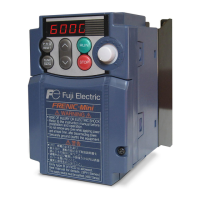
